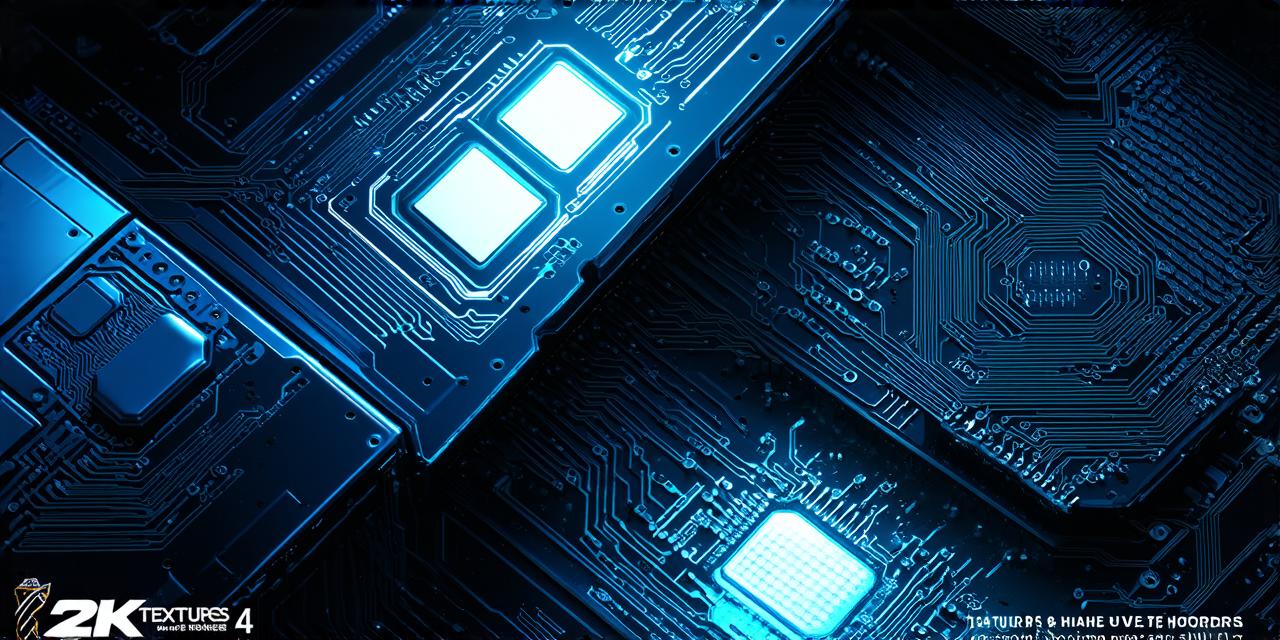<p>Unreal Engine 4 (UE4) is one of the most powerful game engines available on the market today. It has gained immense popularity among game developers due to its intuitive user interface, advanced graphics capabilities, and extensive support for virtual reality (VR) and augmented reality (AR) technologies.</p>
<h2>Introduction</h2>
<p>Before diving into the world of Unreal Engine 4, let's first understand what it is and why it's so popular among game developers. UE4 is a real-time 3D creation platform that allows developers to build immersive games for various platforms, including PC, consoles, mobile devices, VR, and AR.</p>
<p>It was developed by Epic Games and released in 2015 as an open-source engine. UE4 offers several features that make it stand out from other game engines, such as advanced graphics capabilities, physics simulation, animation tools, and support for various scripting languages.</p>
<p>Moreover, UE4 has a large and supportive community of developers who contribute to its continuous improvement and provide valuable resources and tutorials.</p>
<h2>Getting Started with UE4</h2>
<p>The first step to mastering UE4 is to download and install it on your system. You can download the latest version of UE4 from the official Epic Games website. Once installed, launch UE4 and create a new project.</p>
<p>When creating a new project, you will be prompted to choose a template that best suits your needs. UE4 offers several templates, including 2D, 3D, and VR/AR templates. For this guide, we recommend selecting the 3D template as it provides the most comprehensive features for game development.</p>
<p>Next, you will need to set up your project settings. This includes configuring your system specifications, selecting your target platforms, and setting up your project's file structure. We recommend following the default settings for this step as they are optimized for performance and ease of use.</p>
<h2>Creating Your First Scene in UE4</h2>
<p>The next step is to create your first scene in UE4. To do this, you will need to navigate to the "Content Browser" window, where you can create new assets such as terrain, buildings, and characters.</p>
<p>UE4 offers a variety of built-in assets that you can use to quickly populate your scene, or you can create your own assets using 3D modeling software like Blender or Maya.</p>
<p>Once you have created your assets, you can add them to the scene by dragging and dropping them onto the "Scene Hierarchy" window. The "Scene Hierarchy" is a tree-like structure that represents the hierarchy of objects in your scene. You can organize your objects into groups and subgroups to make it easier to manage them later on.</p>
<h2>Lighting and Camera Settings</h2>
<p>Lighting and camera settings are crucial components of any game scene. In UE4, you can create realistic lighting effects using a variety of tools such as directional lights, point lights, and spotlights. You can also adjust the color temperature, intensity, and ambient light to achieve the desired effect.</p>
<p>Camera settings can be adjusted to suit your needs, including field of view, aspect ratio, and focal length. UE4 offers a variety of camera types such as first-person, third-person, and isometric cameras that you can use to create different perspectives in your game.</p>
<h2>Animating Your Scene</h2>
<p>Animation is an essential component of any game, and UE4 provides several tools for creating animations. You can create animations for characters, objects, and even environments using keyframes, animation curves, and motion capture data.</p>
<p>Keyframes are used to define the position, rotation, and scaling of an object at specific points in time. Animation curves are used to create smooth transitions between keyframes and add realism to your animations. Motion capture data can be used to create realistic character movements based on real-world motion.</p>
<p>UE4 also supports animation blueprints, which are visual representations of animations that can be created without writing any code. Animation blueprints make it easy to create complex animations and can save you a lot of time and effort compared to traditional animation methods.</p>
<h2>Programming in UE4</h2>
<p>Programming is an essential part of game development, and UE4 supports several programming languages such as C++, Blueprint Visual Scripting, and Unreal Engine's own custom scripting language called C++Blueprints.</p>
<p>C++ is the most powerful and flexible programming language in UE4 and is used for advanced features such as graphics rendering, physics simulation, and AI. Blueprint Visual Scripting is a visual programming language that allows you to create complex behaviors without writing any code. C++Blueprints are a combination of C++ and Blueprint Visual Scripting that provide the best of both worlds.</p>
<p>UE4 also supports plugins, which are third-party tools that can be used to extend the functionality of the engine. There are several plugins available for UE4 that can help you speed up development, add new features, and improve performance.</p>
<h3>Summary</h3>
<p>In conclusion, mastering Unreal Engine 4 in just 24 hours is possible with the right approach and mindset. By understanding the essential features and tools of UE4, following best practices, and leveraging the power of plugins and visual scripting, you can create stunning games in no time. Remember to always start small, practice regularly, and seek help when needed. With dedication and hard work, you can become a master game developer in just 24 hours.</p>
<h3>FAQs</h3>
<p>Here are some frequently asked questions about Unreal Engine 4:</p>
<ul>
<li><strong>How do I create animations in UE4?</strong> Answer: To create animations in UE4, you can use keyframes, animation curves, and motion capture data. You can also use animation blueprints to create complex animations without writing any code.</li>
<li><strong>What programming languages are supported in UE4?</strong> Answer: UE4 supports several programming languages such as C++, Blueprint Visual Scripting, and Unreal Engine's own custom scripting language called C++Blueprints.</li>
<li><strong>Can I use UE4 for VR/AR development?</strong> Answer: Yes, UE4 has built-in support for VR/AR development, making it one of the most popular engines for creating immersive VR/AR experiences.</li>
</ul>


